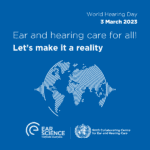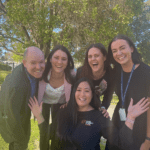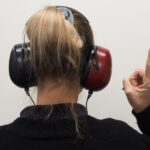No News Might Be Bad News: An Analysis of Under-reported Hearing Aid Problems with Bec Bennett
Getting used to life with hearing aids is no easy task. Audiologists spend a lot of time and energy providing their clients with information and training on preventing and troubleshooting hearing aid and communication problems. Recent research suggests that these training efforts are insufficient. The majority of hearing aid owners experience issues relating to their hearing aids, which consequently impact their ability to hear and communicate well.
To better understand the kinds of problems experienced by modern-day hearing aid owners, Dr Bec Bennett interviewed adult hearing aid owners and audiologists to generate a comprehensive list of issues that can arise during both the initial hearing aid acquisition and ongoing use. Overall, the groups generated a list of 80 individual problems relating to hearing aid use across four themes:
- Hearing Aid Management
- Hearing Aid Sound Quality and Performance
- Feelings, Thoughts and Behaviours
- Information and Training
Dr Bennett then surveyed 413 adult hearing aid users, recruited from seven clinics across Australia, to explore
- The prevalence of device-related problems associated with hearing aid use
- Factors associated with hearing aid problems and
- Participants’ help-seeking behaviours for these problems.
What we discovered
Almost all participants (98%) indicated that they were experiencing at least one of the hearing aid problems included in the survey. The number of hearing aid related problems reported by participants ranged from 0 to 25 (of a possible 26), with hearing aid owners reporting an average of 10 problems each (SD = 5).
Participants who reported experiencing a greater number of hearing aid problems also reported lower hearing aid benefits and satisfaction with their hearing aids.
Participants indicated that they had NOT reported 54% of these problems to their clinic. This is a missed opportunity, as those problems that were identified as being least likely to be reported to the clinic were largely resolvable.
Some clients don’t seek help for their hearing aid-related problems because they may have been unaware that they are experiencing the issues. They may be unaware that the problems they are experiencing are rectifiable or may be unsure how to get help.
The research suggests that up to 30% of people who need (and have) hearing aid and are not using their hearing aids or don’t feel like they’re getting any benefit.
This episode of This Week in Hearing Dr Bec Bennett, sits down with Brian Taylor to discuss the research on under-reported hearing aid problems and how clinicians can handle them.
About the Panel
Brian Taylor, AuD, is the senior director of audiology for Signia. He is also the editor of Audiology Practices, a quarterly journal of the Academy of Doctors of Audiology, editor-at-large for Hearing Health and Technology Matters and adjunct instructor at the University of Wisconsin.
Bec Bennett, PhD, is a clinical audiologist and researcher at Ear Science Institute Australia.
Ask Dr Bennett a question about her research
Bennett, R. J., Laplante-Lévesque, A., Meyer, C. J., & Eikelboom, R. H. (2018). Exploring hearing aid problems: Perspectives of hearing aid owners and clinicians. Ear and hearing, 39(1), 172-187. Bennett, R. J., Laplante-Lévesque, A., & Eikelboom, R. H. (2019). How Do Hearing Aid Owners Respond to Hearing Aid Problems?. Ear and hearing, 40(1), 77-87. Bennett, R. J., Kosovich, E. M., Stegeman, I., Ebrahimi-Madiseh, A., Tegg-Quinn, S., & Eikelboom, R. H. (2020). Investigating the prevalence and impact of device-related problems associated with hearing aid use. International journal of audiology, 59(8), 615-623. Bennett, R. J., Kosovich, E., Cohen, S., Lo, C., Logan, K., Olaithe, M., & Eikelboom, R. (2021). Hearing Aid Review Appointments: Attendance and Effectiveness. American Journal of Audiology, 30(4), 1058-1066.






